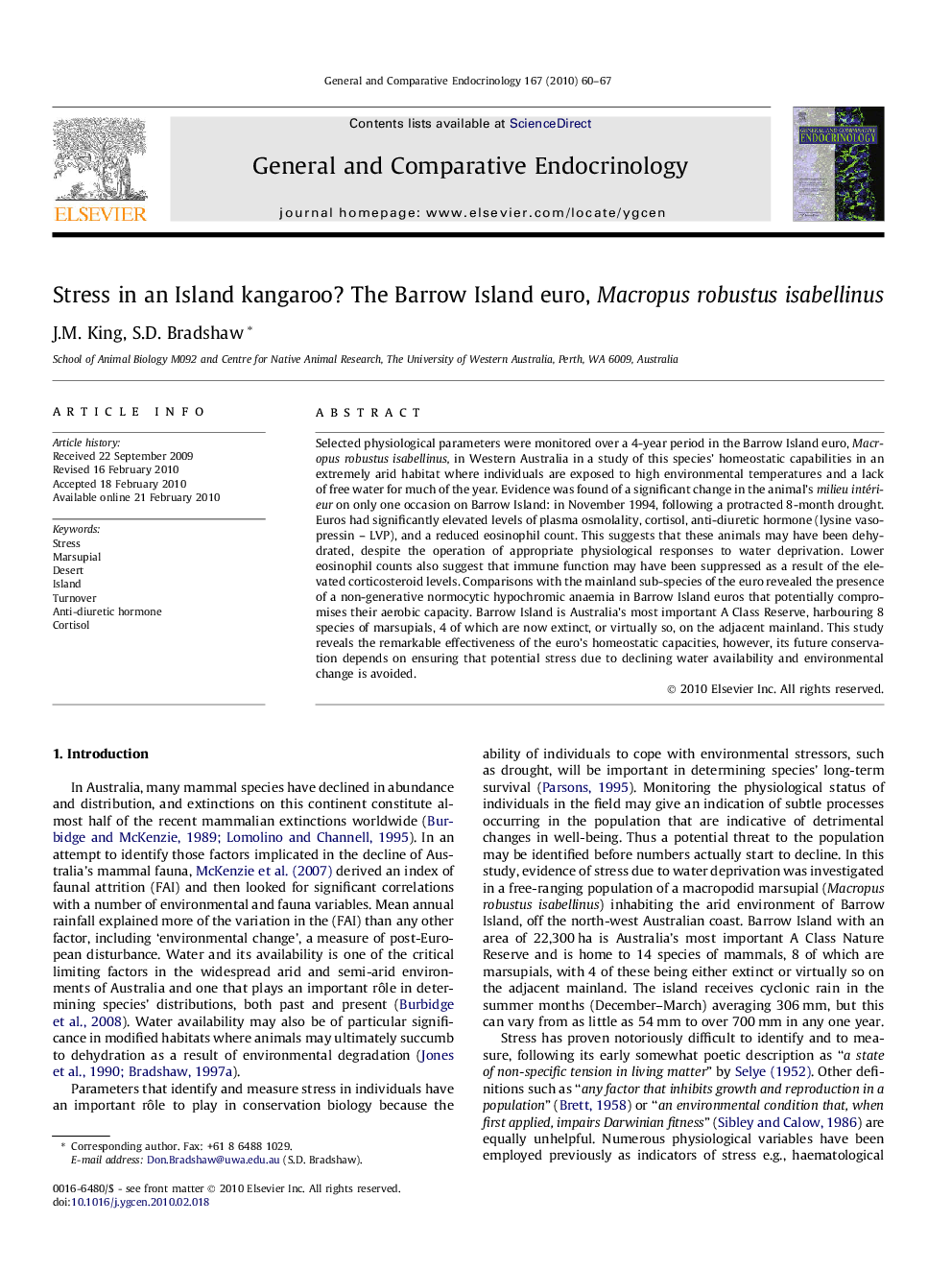| Article ID | Journal | Published Year | Pages | File Type |
|---|---|---|---|---|
| 2801247 | General and Comparative Endocrinology | 2010 | 8 Pages |
Selected physiological parameters were monitored over a 4-year period in the Barrow Island euro, Macropus robustus isabellinus, in Western Australia in a study of this species’ homeostatic capabilities in an extremely arid habitat where individuals are exposed to high environmental temperatures and a lack of free water for much of the year. Evidence was found of a significant change in the animal’s milieu intérieur on only one occasion on Barrow Island: in November 1994, following a protracted 8-month drought. Euros had significantly elevated levels of plasma osmolality, cortisol, anti-diuretic hormone (lysine vasopressin – LVP), and a reduced eosinophil count. This suggests that these animals may have been dehydrated, despite the operation of appropriate physiological responses to water deprivation. Lower eosinophil counts also suggest that immune function may have been suppressed as a result of the elevated corticosteroid levels. Comparisons with the mainland sub-species of the euro revealed the presence of a non-generative normocytic hypochromic anaemia in Barrow Island euros that potentially compromises their aerobic capacity. Barrow Island is Australia’s most important A Class Reserve, harbouring 8 species of marsupials, 4 of which are now extinct, or virtually so, on the adjacent mainland. This study reveals the remarkable effectiveness of the euro’s homeostatic capacities, however, its future conservation depends on ensuring that potential stress due to declining water availability and environmental change is avoided.
